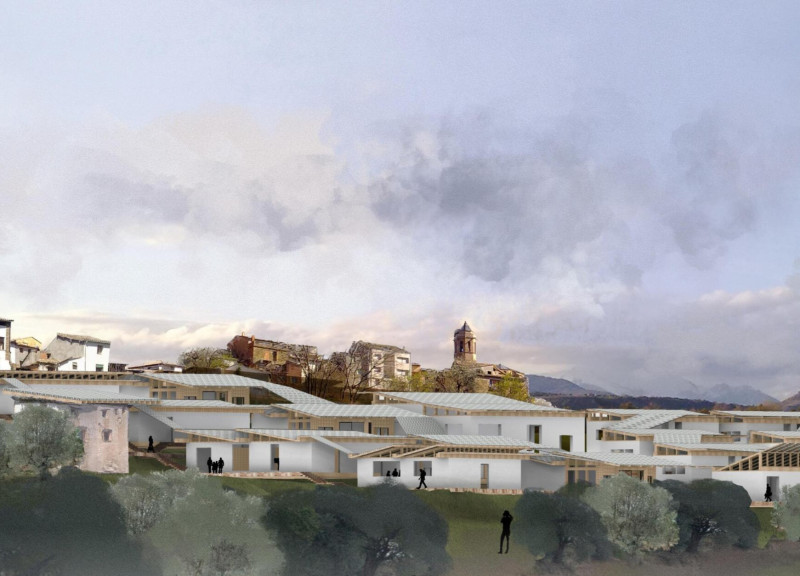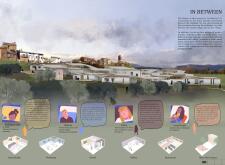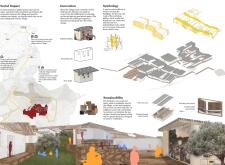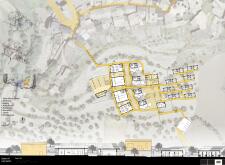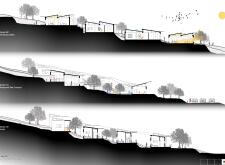5 key facts about this project
The project embodies a modern architectural style, characterized by clean lines, open spaces, and a focus on natural materials. This deliberate choice enhances the connection between the interior spaces and the surrounding landscape, fostering a sense of harmony and balance. The building's layout is strategically organized to promote accessibility and functionality, ensuring that all spaces serve their intended purposes effectively.
In terms of its function, this architectural design may serve various purposes—be it residential, commercial, or cultural. Each function is seamlessly integrated into the design, with spaces thoughtfully arranged to facilitate movement and interaction. For instance, communal areas might be positioned to encourage gatherings, while private zones are designed for retreat and tranquility. This careful zoning not only optimizes user experience but also respects the privacy and needs of individuals.
The materials chosen for this project reflect a commitment to sustainability and a respect for local heritage. Commonly employed materials such as timber, brick, glass, and concrete are utilized not merely for their structural properties but also for their aesthetic qualities. Timber imbues warmth into the design, while expansive glass panels blur the line between indoor and outdoor environments, inviting natural light to permeate the interiors. The use of brick can speak to local craftsmanship, grounding the building within its community and history.
A distinctive design approach evident in this project involves an exploration of light and shadow, achieved through strategic overhangs and perforated facades. This not only enhances the visual interest of the building but also contributes to its energy efficiency by minimizing direct sunlight during peak hours while allowing soft, diffused light to enter the spaces. Moreover, careful consideration of sightlines introduces a series of perspectives, drawing the eye toward key focal points, which may include landscaped areas, water features, or significant architectural elements.
Landscaping plays a critical role in the project, with outdoor spaces designed to complement the built environment. Gardens, terraces, and pathways are integrated into the overall design, promoting outdoor activities and enhancing the livability of the area. These green spaces not only support biodiversity but also create a calming atmosphere that enriches the user experience.
As this project moves through its lifecycle from conception to realization, the collaborative efforts between architects, designers, and engineers become vital. This cooperation ensures that every detail—from architectural plans and sections to finishes—aligns with the overarching vision, emphasizing functionality while respecting the aesthetic values of the design.
To gain a deeper understanding of this architectural design project, one is encouraged to explore its architectural plans, sections, and designs. Through these documents, the intricate details, spatial relationships, and innovative ideas can be fully appreciated. Each aspect of the project contributes to a larger narrative, showcasing not only the capabilities of contemporary architecture but also its responsibility towards providing meaningful spaces for its users. Engaging with these materials may encourage deeper reflections on the architectural ideas that define this project, inviting ongoing dialogue about its impact and potential within the community.


